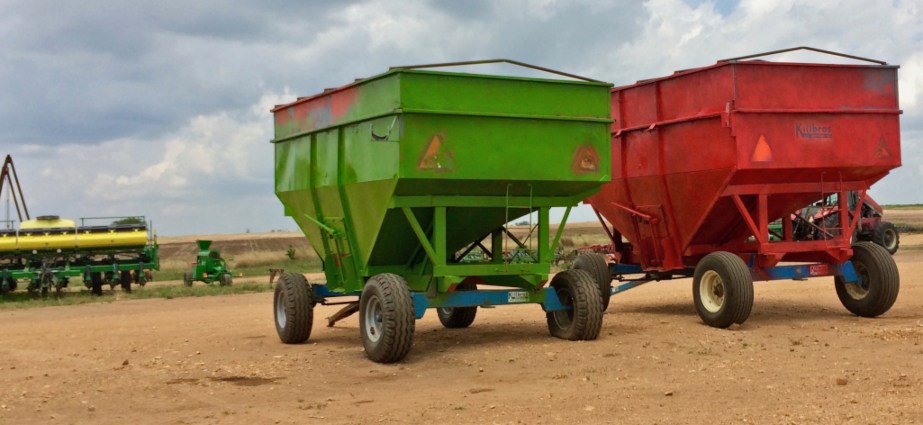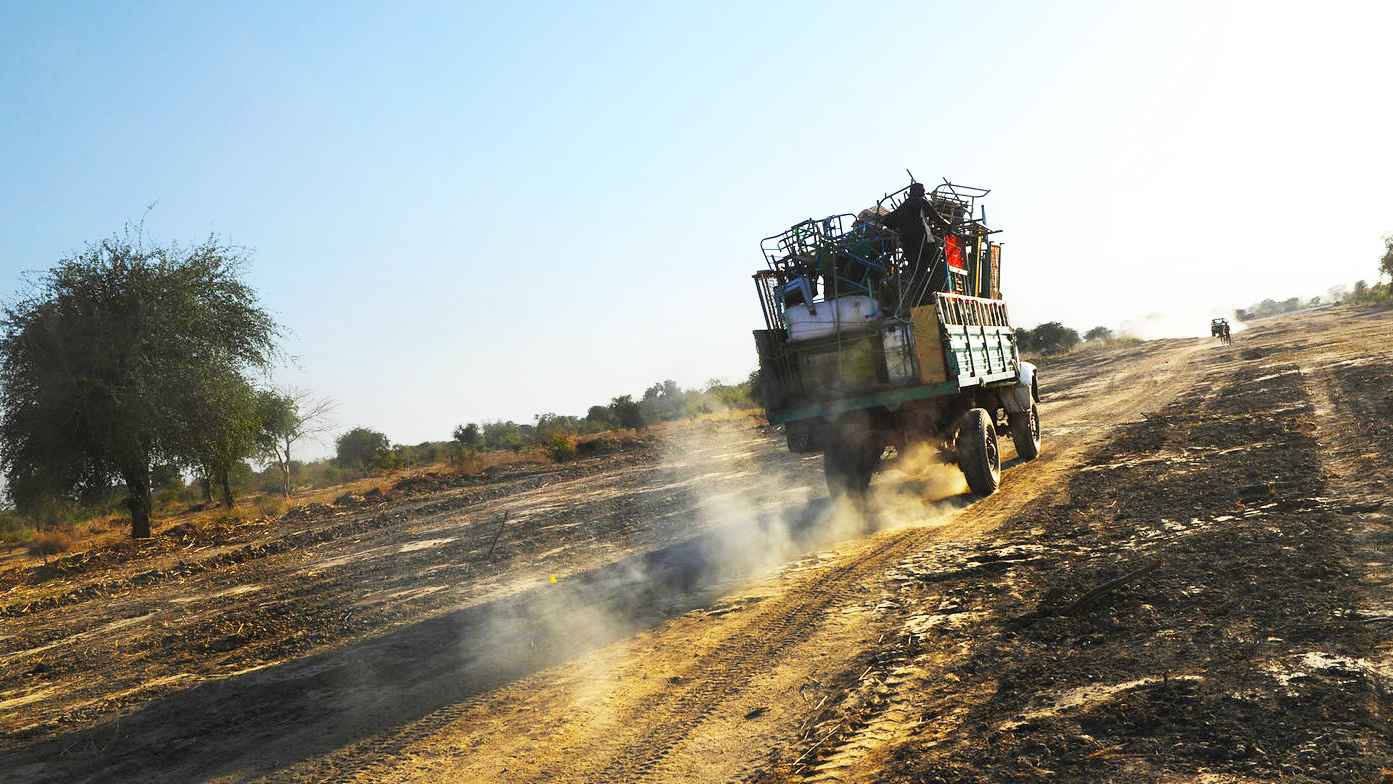The rise of large-scale agricultural investments in post-war northern Uganda has reignited debates about customary land claims. Who has the authority to transfer such land to business investors? The question has introduced unexpected struggles over public authority to manage land, while renewing local tensions and drawing international attention.
Northern Uganda has become a popular destination for large-scale commercial agri-business, touristy and infrastructure projects throughout the last decade. While promising economic growth, development and to turn the region into East Africa’s ‘breadbasket’, these large-scale land acquisitions have also sparked competition and conflict over local land rights. Land issues are already a major concern and a source of conflict in the region.
Emerging from a two-decade long civil war in 2006, the post-conflict recovery period has been marked by contentious land disputes and grievances. This has resulted from years of forced displacement of the rural population into Internally Displaced Persons (IDP) camps as well as rampant theft and looting of livestock during the war, heightening competition over natural resources and fuelling distress sales of land. Over 90% of the land in the Acholi sub-region in northern Uganda is managed under (mostly undocumented and unregistered) customary tenure and communal ownership. This simultaneously makes official processes of leasing land for investment more complicated and threatens the land security and livelihood of customary land holders and users.
The legitimacy of customary land claims
Uganda’s 1995 Constitution formally recognises customary land tenure as equal to three other land tenure types: freehold, leasehold and Mailo. In practice, however, customary land rights are not always recognised – that is, norms defined and sustained by local communities and their traditions (‘customs’) rather than the central state. This leads to much debate and conflict over the authority to regulate the large-scale land investments that are now taking place in northern Uganda and in other parts of the country. At root is the burning question: who has the authority to allocate which types of land to investors? Where does public authority over land lie and when does this authority lie in community or ‘private’ hands?
In post-war northern Uganda, the recent sharp rise in large-scale, mostly foreign land investments has reignited debates about the legitimacy of customary land claims, which has introduced new and unexpected dynamics in land politics to the region. Problems arise around the discrepancy between de jure and de facto recognition of customary land. De jure recognition of land rights means recognition and protection in formal legal frameworks (such as constitutions, land laws and policies), which is, for example, expressed in the enforceability of land rights in a court of law. De facto recognition, by contrast, refers to the factual situation on the ground and the way that land rights are presently perceived and protected (or not) in practice. This includes the subjective beliefs by various actors over the scope and limitations of their own or others’ rights. Despite being de jure protected by the legal framework, customary claims are de facto sometimes not perceived as legitimate by the central state and other actors.
So how are customary rights and customary land users treated when large-scale investors arrive in the region? Have land-seeking investors negotiated directly with customary land holders and, if so, under what conditions? What are the reactions of communities claiming customary rights?
Two routes to agricultural investment
Large-scale agricultural investments in northern Uganda in the last decade have taken two main routes. In the first route, the central government has allocated land directly to investors, on the grounds that the land is public, not customary land. According to the Ugandan Land Act of 1998, public land is ‘not used or owned by anyone’ and is managed under the authority of local District Land Boards. The government considers the land to be essentially under the direct control of local agencies of the state. According to the government, in cases of large-scale investments on such land, there is no need to engage with local land users. From the legal perspective of the state, those occupying the land are ‘squatters’.
In the second route, investors negotiate lease agreements directly with customary clan leaders and household heads. In many cases, outside investors have facilitated the formalisation of land titles for local families, then leased the land through formal legal channels. In effect, this transforms customary land to land held under freehold or leasehold. This process has been hailed by local leaders, local and international NGOs and other observers as a ‘better’ investment model than those in which the government forcefully takes possession of the land. Although examples of this ‘second’ route do at times take place on what the government has termed public land, the investors have still acknowledged the prior existence of at least some customary land rights.

Yet in neither route are all existing claims to customary land rights recognised unproblematically, in and of themselves. Local claims to customary land are either disregarded and denied, recognised for some families and clans but not for others, or overridden when the form of land tenure changes from customary to freehold or leasehold.
How do local communities claiming customary land rights react, especially when these rights go unrecognised? These routes to the transfer and transformation of land rights have given rise to two very different reactions from local communities.
Community resistance to land acquisition
Under the first route to land acquisition, local communities have sometimes organised counter-mobilisations and protests against investment projects, where they consider the land to be their ancestral and customary land. For example, the case of the Amuru Sugar Works company in Amuru District gave rise to nude protests from women in the communities around the Lakang, Kololo and Bana areas in Pailyec Parish. Nude protests have historically been a strong expression of disapproval and rejection, and a symbolic form of collective protest in Uganda and other parts of Africa.
The protests garnered international attention through worldwide media coverage and sent a strong message to the Ugandan government that the customary communities would not accept the proposed project. Community leaders demanded that the investors negotiate directly with customary landowners, given that the proposed investment site was on their ancestral customary land, and not public land as the government claimed. The protests marked the high point of tensions after a failed court case against Amuru Sugar Works and the Amuru District Land Board in Gulu. Litigants had petitioned the High Court in Gulu to recognise and declare the land customary, but this petition was denied by the court.
In the second route to large-scale land acquisitions, investors have negotiated lease agreements with communities on the ground. This has generally led to greater degrees of cooperation and acceptance from the communities. Even so, there has been some noticeable conflicts between and among families, and between locals and investors, over the ownership of the land.
The Atiak Sugar Works project is a good example of such local contestations. Here, two rival family groups feuded over local land ownership, but the outside investor negotiated mainly with one family that claimed ownership over a large tract of land. In the course of the investment, this land claim was formalised by clan owners through the Amuru District Land Board and a freehold title was issued to the family. This made the land indisputably the family’s private property and thus erased all other potential customary claims to the land by neighbouring communities and other families. This dispute has delayed and complicated the implementation of the Atiak Sugar Works project through such incidents as local protests, including fires set to mature sugar cane plantations. Similar large-scale investments in the region have also experienced low key protests in the form of rampant theft of maize crops and other farm products.
These cases highlight how the two different routes to large-scale land acquisition elicit different community responses. While in the first route protests were large-scale and attracted international attention, in the other route protests took the form of passive-aggressive tactics and property destruction, contained at the local level.
Companies persist with government support
Despite these conflicts and protests, companies have continued to implement their investment projects, albeit with some difficulty. For the first route, the central government has become directly involved in dealing with local communities, mostly in the form of compensation payments and resettlement packages to appease the protestors. Payments were not based, however, on the recognition of ancestral or customary claims, but rather on the local residents’ ability to prove that they had purchased the land in the past, or their ability to provide other forms of documented evidence. The beneficiaries of compensation have included many businesses and elite families who purchased land in the 10 years since the end of the war in northern Uganda.
For the second route, locally contained and latent conflicts continue to affect the Atiak Sugar Works company, compelling them to undertake on-going negotiations with surrounding communities in Atiak and in Lamwo, and to work with community leaders to promote the project. But despite efforts by both the government and investors to appease communities, the result on local landholders and those who use the land is the same: their customary land rights are lost or denied.
Photo: ‘Land grabbing in Uganda’ by FoEI / ATI – Jason Taylor is licensed under creative commons (CC BY-NC-ND 2.0).






Arthur & Carolin, thanks for the good piece. Its really informative and on-point, the other third party I would talk of are the power elites/opportunist who pretends to represent a people and exploit their ignorance and make deals behind doors, in some cases and in other places the state is as well accused of illegal acquisition of large chunks of land for cattle rearing/grazing. My thinking is on how best to end this exploitative vice.